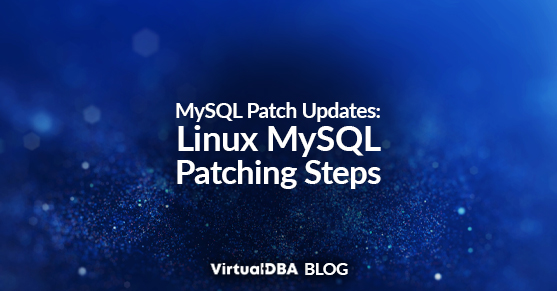MySQL is an open-source relational database management system that individuals and organizations use. Its popularity has become a prime target for cyber attackers looking for vulnerabilities to exploit. To ensure the security of MySQL, Oracle releases critical patch updates periodically. These patches address security flaws and other bugs that attackers could exploit to gain unauthorized access to data. MySQL users need to stay up-to-date with these critical patch updates and promptly apply them to their systems to ensure the security and integrity of their databases.
The latest critical patch updates can be found here: https://www.oracle.com/security-alerts/?source=:em:gbc:ie:cpo:::RC_WWMK210714P00017:SEV400285523
Steps to Perform a Critical Patch Update in MySQL
1. Determine the version of MySQL that you are running: You can check the version of MySQL by running the command in the MySQL command prompt:
mysql> SELECT VERSION(); On the command line, you can run the following command:
$ mysqld -version2. Download the latest patch: Once you have determined the version of MySQL that you are running, download the latest patch for your version of MySQL.
If you are running the commercial version, you can find the latest download by logging into Oracle Support and clicking the “Patch & Updates” tab on the top right of the page. Next, you can search for the patch using the “Patch Search” fields.
The image below shows entries that will give you a complete list of available patches.

If you are using the MySQL Community Server, you can download the latest version of MySQL Server directly from their website.
3. Take a backup: It is always a good idea to take a database backup before performing any updates to ensure you can revert to a previous version if something goes wrong during the patch update process.
4. Stop MySQL: Before installing the patch, you need to stop the MySQL service. This can be done using the Windows Services Manager in Windows or using the Linux command:
$ sudo systemctl stop mysql5. Install the patch: Extract the patch downloaded in step 2 and follow the instructions in the patch release notes. This may involve running scripts to update the database schema.
Click the following link for general installation information: https://dev.mysql.com/doc/refman/5.7/en/installing.html.
6. Start MySQL: Restart the MySQL service once the patch has been installed. This can be done using the Windows Service Manager Window or using the Linux command:
$ sudo systemctl start mysql7. Verify the installation: After restarting the MySQL service, verify that the patch has been installed correctly.
Additional Considerations
- Schedule Regular Updates: Consider scheduling regular updates to ensure your MySQL server remains secure and up-to-date.
- Read the Documentation: Always refer to the official MySQL documentation for any specific instructions related to the version you are installing.
- Test in a Staging Environment: If possible, test the upgrade in a staging environment before applying it to production.
By following these steps, you can patch your MySQL server effectively.
The next four critical patch update release dates:
- January 21, 2025
- April 15, 2025
- July 15, 2025
Please contact us for more information.

